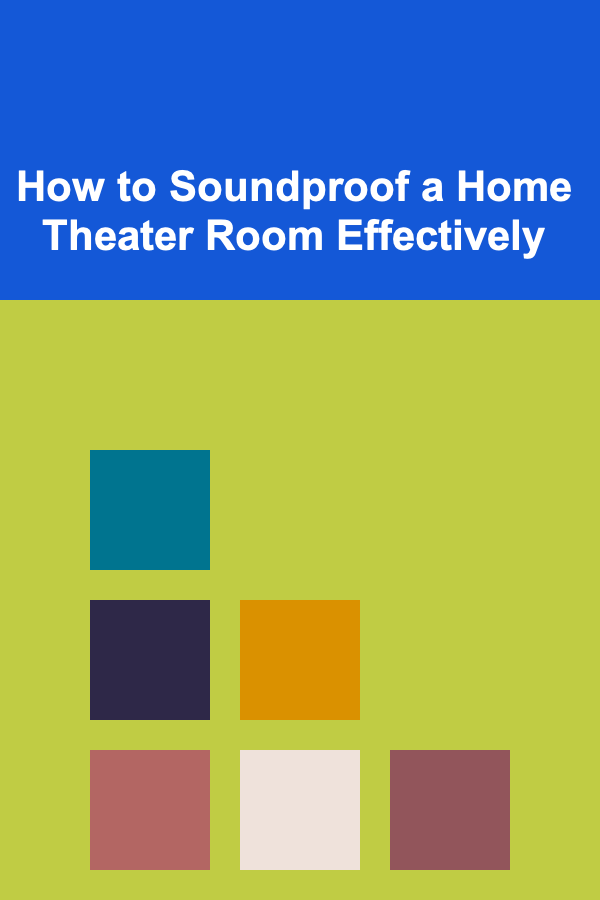
How to Design Accessible Urban Spaces
ebook include PDF & Audio bundle (Micro Guide)
$12.99$6.99
Limited Time Offer! Order within the next:
Not available at this time

Urban spaces are where people from diverse backgrounds, abilities, and needs interact. As cities continue to expand, ensuring that urban environments are inclusive and accessible for everyone---regardless of age, mobility, or disability---becomes paramount. Accessible urban spaces not only enhance the quality of life for people with disabilities but also contribute to the overall social, cultural, and economic vibrancy of a city.
Designing accessible urban spaces involves more than just meeting basic legal requirements; it's about creating environments that support diverse needs, foster inclusivity, and promote active engagement. This article will explore the principles, guidelines, and strategies for designing urban spaces that are accessible, equitable, and conducive to fostering strong, sustainable communities.
Understanding Accessibility in Urban Design
Accessibility in urban design refers to creating environments that can be used by as many people as possible, including those with disabilities. This involves not just physical access but also sensory and cognitive accessibility. Urban spaces must cater to a broad range of needs, such as those of people with mobility impairments, visual or hearing impairments, cognitive disabilities, elderly people, and children.
Physical Accessibility
Physical accessibility refers to the ability to move easily through spaces. This includes ensuring that there are no barriers for people with mobility impairments, such as wheelchair users or those with walkers, and that paths are clear and well-maintained.
Sensory Accessibility
Sensory accessibility ensures that people with sensory impairments, such as those who are blind, deaf, or hard of hearing, can navigate and enjoy urban spaces. This might include tactile paving, auditory signals, and signage with braille.
Cognitive Accessibility
Cognitive accessibility focuses on individuals who may have learning disabilities or difficulties with decision-making. Urban spaces should be designed with clear signage, simple layouts, and easy-to-understand features that allow people to navigate safely.
Universal Design
The concept of universal design is central to accessibility. Universal design is an approach that aims to create environments that can be accessed and used by people of all ages and abilities without the need for specialized adaptations. This is not just about compliance with regulations but about fostering inclusivity and equality in public spaces.
The Importance of Accessibility in Urban Planning
Accessible urban design is essential for fostering inclusive communities. Accessibility in urban planning has several key benefits, which contribute to the overall health, well-being, and economic prosperity of a city.
2.1 Promoting Social Inclusion
Accessible urban spaces enable people with disabilities to fully participate in social life. By providing equal opportunities for mobility, interaction, and engagement, inclusive spaces break down the barriers that often isolate people with disabilities from society. This contributes to greater social integration and cohesion.
2.2 Enhancing Mobility and Independence
People with disabilities often face significant challenges in moving through cities. Accessible spaces allow them to navigate urban environments with ease, promoting autonomy and reducing reliance on caregivers. This not only improves individual quality of life but also eases the burden on healthcare systems and public services.
2.3 Supporting Economic Growth
Cities that are accessible are more likely to attract a diverse range of residents and visitors, contributing to the economic vibrancy of the area. Accessible spaces encourage tourism, increase employment opportunities, and enhance the local economy by allowing businesses to serve a broader range of customers.
2.4 Improving Public Health
Urban spaces that are accessible promote physical activity, social interaction, and mental well-being. Accessible parks, sidewalks, and recreational areas encourage outdoor activities and community engagement, all of which contribute to better physical and mental health outcomes.
Principles of Accessible Urban Design
Designing accessible urban spaces requires adherence to several key principles. These principles serve as a guide for ensuring that urban environments are inclusive, user-friendly, and welcoming for all.
3.1 Flexibility in Use
Urban spaces should be adaptable to a wide variety of uses and user needs. Flexible design allows spaces to accommodate different activities, from recreational to social and cultural events, and allows them to be used by people with varying abilities.
3.2 Simple and Intuitive Design
The design of urban spaces should be easy to understand and navigate. Clear signage, simple layouts, and intuitive design elements such as lighting, colors, and materials can help people with cognitive impairments or those who are unfamiliar with the space.
3.3 Equity and Fairness
Equitable access means that no group is disadvantaged by the design of urban spaces. Design decisions should be made with the goal of providing equal opportunities for all individuals, regardless of their abilities, socioeconomic status, or other factors.
3.4 Safety and Comfort
Safe and comfortable spaces are essential to making sure that urban areas are accessible. Good lighting, well-maintained walkways, clear sightlines, and areas for resting can help people feel comfortable and secure as they navigate urban spaces.
3.5 Integration of Nature and Green Spaces
The inclusion of green spaces, parks, and natural elements in urban areas plays a crucial role in promoting accessibility. Accessible parks, gardens, and recreational spaces not only improve the aesthetic appeal of the area but also provide therapeutic and social spaces for all.
Key Design Features for Accessible Urban Spaces
Designing accessible urban spaces involves implementing specific features that cater to a range of needs. These features must be seamlessly integrated into the design to ensure the space is welcoming to all.
4.1 Accessible Pathways and Sidewalks
Sidewalks and pedestrian pathways should be designed with the goal of enabling people with mobility impairments to travel freely and safely. Key considerations include:
- Smooth, even surfaces: Avoid abrupt changes in elevation, cracks, or obstacles that may hinder wheelchair users or people with walking aids.
- Wide pathways: Ensure that pathways are wide enough to accommodate wheelchairs, strollers, and other mobility aids.
- Curb cuts and ramps: Curb ramps must be installed at all intersections and entrances to allow wheelchair users to cross the street safely.
4.2 Wayfinding and Signage
Clear, intuitive signage is essential for people with visual, hearing, or cognitive impairments. Features like:
- Braille and tactile signage: Allow individuals who are blind or have low vision to navigate the space independently.
- Auditory signals: Sound signals at crossings can help people who are blind or visually impaired.
- Large, high-contrast fonts: For people with low vision, text on signs should be large and easy to read.
4.3 Rest Areas and Seating
Urban spaces should provide ample opportunities for people to rest and relax, especially for those with limited stamina or mobility. Strategically placed seating, such as benches or sheltered spots, enables people to take breaks and enjoy their surroundings.
4.4 Accessible Public Transport and Parking
Access to public transportation is a crucial aspect of accessible urban design. Bus and train stations should be designed to accommodate people with disabilities, including:
- Elevators and ramps for easy access to stations.
- Low-floor buses for easier boarding and alighting.
- Designated accessible parking spaces that are conveniently located near public spaces.
4.5 Inclusive Playgrounds and Recreation Areas
Children with disabilities should have the same opportunities to play and engage with others in recreational spaces. Inclusive playgrounds should feature:
- Wheelchair-accessible pathways to the play area.
- Adaptive equipment, such as swings that accommodate wheelchairs or sensory play elements for children with autism.
4.6 Lighting and Safety Features
Adequate lighting is essential for both visibility and safety. Well-lit spaces reduce the risk of accidents and enhance security, especially in public areas where people may feel vulnerable. Additionally, urban spaces should be designed with features that enhance visibility and ensure personal safety, such as:
- CCTV cameras in public spaces for surveillance.
- Bright, even lighting that reduces shadows and enhances nighttime visibility.
Challenges in Designing Accessible Urban Spaces
While designing accessible urban spaces is essential, it is not without its challenges. There are several obstacles that urban planners, architects, and policymakers must navigate in order to create inclusive environments.
5.1 Financial Constraints
One of the most significant challenges in designing accessible urban spaces is the cost. Accessibility features---such as curb cuts, elevators, and specialized transportation infrastructure---can be expensive to implement, especially in existing, older urban areas.
5.2 Limited Space in Dense Urban Areas
In densely populated urban environments, space is often at a premium. Designing spaces that accommodate accessibility requirements while maintaining the flow and functionality of the space can be difficult. For example, adding wider sidewalks or ramps may require significant changes to existing infrastructure, which can be complex and costly.
5.3 Lack of Awareness and Education
Sometimes, urban planners and designers may not fully understand the needs of individuals with disabilities, leading to designs that do not truly address accessibility concerns. It is essential to incorporate input from people with disabilities and disability advocates to ensure that spaces are designed effectively.
5.4 Bureaucratic and Regulatory Barriers
There may be bureaucratic hurdles or conflicting regulations that slow down the process of designing accessible urban spaces. Navigating the complex web of zoning laws, building codes, and accessibility standards can delay projects and make it difficult to create inclusive environments.
Conclusion
Designing accessible urban spaces is not just about compliance with legal standards; it is about ensuring that all individuals, regardless of their abilities, can fully participate in urban life. Creating accessible spaces is a crucial step toward fostering inclusivity, promoting social interaction, and enhancing the quality of life for everyone. By following the principles and strategies outlined above, cities can become more equitable, welcoming, and sustainable for all residents and visitors. This approach ultimately contributes to the broader goals of creating vibrant, diverse, and resilient communities that stand the test of time.

How to Choose the Right Toys for Your Pet
Read More
How to Soundproof a Home Theater Room Effectively
Read More
How to Cook Healthy Grains and Legumes
Read More
How To Become a Personal Trainer
Read More
Understanding the Purpose of Literary Agents: A Deep Dive
Read More
How To Save Money on Hobbies and Interests: A Comprehensive Guide
Read MoreOther Products

How to Choose the Right Toys for Your Pet
Read More
How to Soundproof a Home Theater Room Effectively
Read More
How to Cook Healthy Grains and Legumes
Read More
How To Become a Personal Trainer
Read More
Understanding the Purpose of Literary Agents: A Deep Dive
Read More